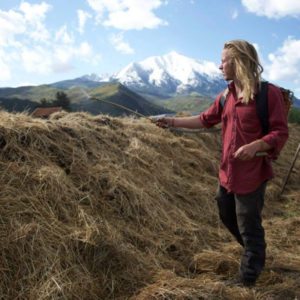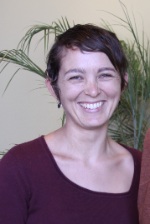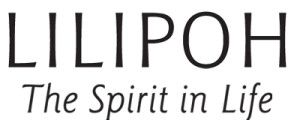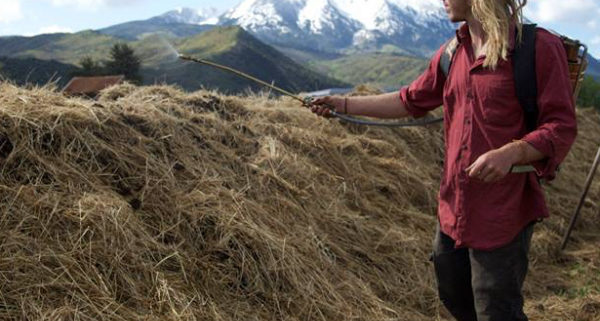Tierra Viva: Farming The Living Earth
2016 North American Biodynamic Conference, Nov. 16-20 in Santa Fe, NM
By Thea Maria Carlson
“The most remarkable feature of this historical moment on Earth is not that we are on the way to destroying the world — we’ve actually been on the way for quite a while. It is that we are beginning to wake up, as from a millennia-long sleep, to a whole new relationship to our world, to ourselves and each other.” — Joanna Macy
The understanding that the earth is alive was once widespread—and still exists in many indigenous cultures and spiritual traditions today. Yet for centuries the dominant Western culture has treated the earth as an inanimate object, a storehouse of resources for us to extract, and a sewer to absorb our wastes. Industrial agriculture arises from and perpetuates this mindset, reducing the soil to a dead substrate whose only value is in the number of pounds of grain that can be harvested from it each year.
One of the great gifts of biodynamic agriculture is that it helps modern humans to experience the earth as a living organism, one with which we can actively engage and collaborate. Biodynamic agriculture is a relational practice. Biodynamics gives us principles, philosophy, and concrete practices to work consciously with this living planet, and with each of our farms and gardens as their own living individualities within it. This November, hundreds of farmers, gardeners, entrepreneurs, and educators will gather in Santa Fe, New Mexico for the 2016 North American Biodynamic Conference, and this year’s theme speaks to this central principle of biodynamics—Tierra Viva: Farming the Living Earth.

The Biodynamic Conference is held in a different region of North America every two years and offers an unparalleled opportunity to delve into biodynamic and regenerative agriculture. Ten inspiring keynote speakers from within and beyond the biodynamic community will share their groundbreaking work from all over the globe. More than 50 workshops will explore topics like Biodynamic Permaculture, Collaborative Farming, Holistic Landscape Ecology, The Spirit of Healing Plants, and Water Resilience on the Farm. The conference programming also features a field day at two local farms; hands-on learning opportunities; a celebratory food, wine, and cider tasting; film screenings; a seed exchange; mixers and meetups; exhibits; artistic performances; festive music and dancing; and local, Biodynamic®, and organic foods.
Newcomers to biodynamics will find plenty of sessions to learn the fundamentals of biodynamic farming and gardening, and there will be many opportunities to learn about other regenerative approaches, including permaculture, traditional Native American and Aztec farming, holistic management, and more. Many workshops will also address the community, economic, and social justice aspects of growing a healthy food system. Families and children are welcome: there is a full schedule of workshops for children ages five to fifteen, including nature awareness, music, and art.
The Biodynamic Conference features three dynamic keynote sessions that explore different aspects of the “Tierra Viva” theme. On Friday, the diverse panelists for Regenerating Earth and Community will tell stories of sustainable development, biodynamic and regenerative farming, gardening, and ranching, and community engagement from New Mexico, New York, Egypt, Tanzania, Uganda, and across Latin America: Helmy Abouleish of SEKEM, organic and Biodynamic inspector Osiris Abrego Plata, Larry Littlebird of Hamaatsa and Tano Farm, Restoration Agriculture author Mark Shepard, Karen Washington of Rise and Root Farm, and Courtney White of A West That Works. On Saturday, biodynamic farmers Sally Fox of Viriditas Farm and Vreseis, Chris Tebbut of Filigreen Farm, and Hugh Williams of Threshold Farm will share how they build water resilience and grow fruit and fiber within diversified, living farm organisms. And to close the conference on Sunday, Dennis Klocek, founder of the Coros Institute and author of Climate: Soul of the Earth, will present on Living Earth, Living Climate.
All of us who will travel to Santa Fe from afar in November can look forward to an incredible and unique landscape, rich and diverse cultures with a long history of agriculture, and many innovations that can be applied to our home landscapes. And from the warm welcome that my Co-Director Robert Karp and I have received during pre-conference visits to Santa Fe, I get the sense that many locals are looking forward to welcoming and connecting with the hundreds of people in the biodynamic community who will bring their energy, wisdom, and curiosity to the Southwest from across North America and beyond.

Thea Maria Carlson is Co-Director of the Biodynamic Association. She lives in the Mayacamas Mountains in Sonoma County, California, and frequently visits other parts of the world. Her diverse experience includes farming biodynamic and organic vegetables, fruit and flowers; teaching gardening, nutrition, and beekeeping; designing, building and managing urban community and educational gardens; and organizing strategic communications training programs for nonprofit leaders. Since 2011, she has played a key role in developing the Biodynamic Association’s educational offerings, planning and implementing the biennial North American Biodynamic Conference, and exploring new ways to manage and evolve the organization.
This post was reprinted with permission from the Biodynamic Association.




Leave a Reply
Want to join the discussion?Feel free to contribute!